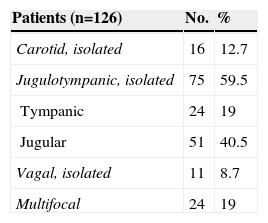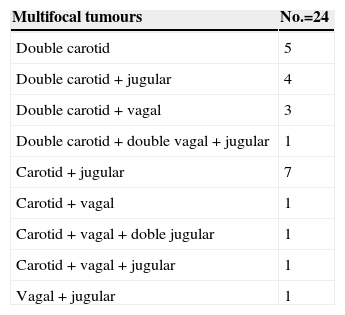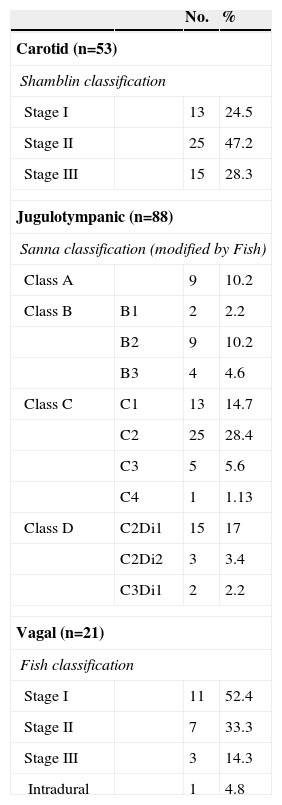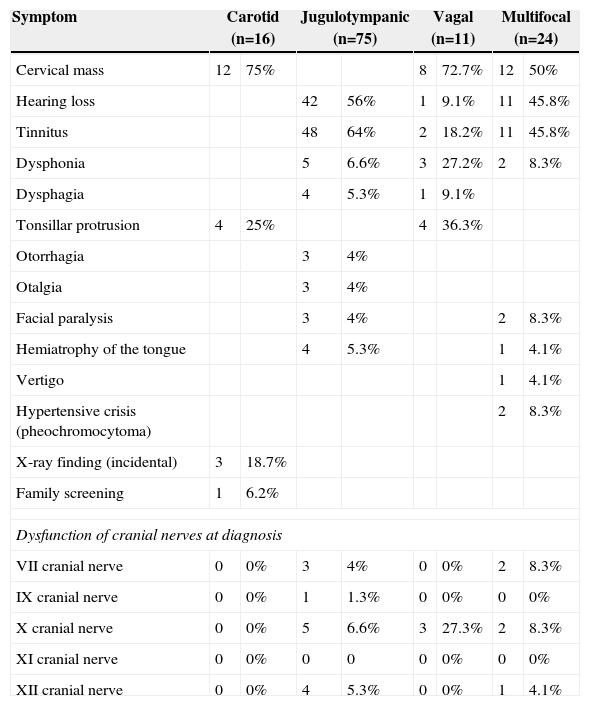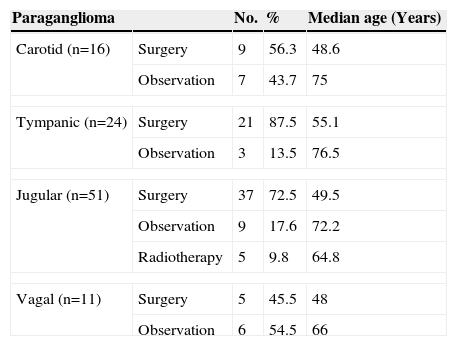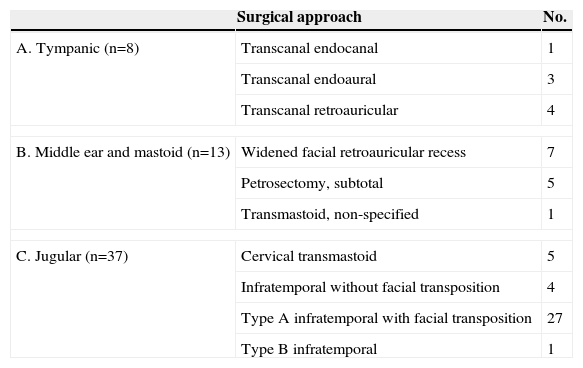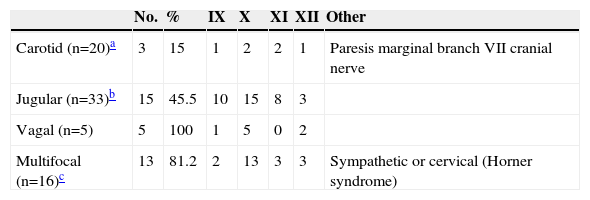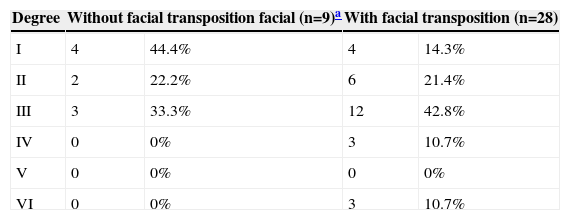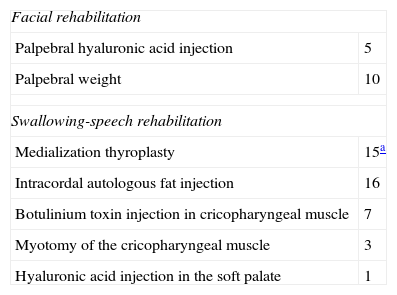Head and neck paragangliomas are rare tumours of a neuroendocrine nature. The aim of this study was to show our experience in the management of these kind of tumours.
MethodsThis was a retrospective study of head and neck paragangliomas diagnosed between 1978 and 2014. A total of 126 patients with 162 tumours were analysed. The paragangliomas included 88 jugulotympanic tumours, 53 carotid tumours and 21 vagal paragangliomas.
ResultsMean age at diagnosis was 53.1 years; 87 patients were female (69.1%) and 39, male (30.9%). Multifocality was present in 24 patients (19.1%). Germline mutations were found in 20 patients analysed; SDHD and SDHB were the most frequent. Surgery was performed on 72 isolated paragangliomas: these were 9 carotid, 21 tympanic, 37 jugular and 5 vagal paragangliomas. There were 25 isolated tumours that were observed periodically: 7 carotid, 3 tympanic, 9 jugular and 6 vagal paragangliomas; 5 jugular tumours were irradiated. Multifocal paragangliomas were individually treated, with a total of 26 surgical procedures and 36 tumours resected, 9 irradiated and 12 tumours periodically observed. Postoperative cranial nerve deficits in isolated carotid paragangliomas were lower (15%) compared with jugular tumours (45.5%, P=.04). Nerve deficit was found more frequently in tumours with intradural extension (100%) than in extradural tumours (37.5%, P=.007).
ConclusionsManagement of head and neck paragangliomas include surgery, radiotherapy and wait and scan policies. A combination of all of them is usually needed in patients with multifocal paragangliomas.
Los paragangliomas de cabeza y cuello son tumores infrecuentes de naturaleza neuroendocrina. El objetivo de nuestro estudio es mostrar nuestra experiencia en el manejo de estos tumores.
MétodosEstudio retrospectivo de paragangliomas cervicocefálicos diagnosticados entre 1978-2014. En total fueron 126 pacientes con 162 tumores. Entre los tumores analizados se incluyeron 88 paragangliomas yugulotimpánicos (54,3%), 53 carotídeos (32,7%) y 21 vagales (12,9%).
ResultadosLa edad media al diagnóstico fue de 53,1 años; 87 pacientes eran mujeres (69,1%), y 39 varones (30,9%). La multicentricidad estuvo presente en 24 pacientes (19,1%). Se encontraron mutaciones genéticas germinales en el 50% de los pacientes analizados, siendo SDHD y SDHB las más frecuentes. Se intervinieron quirúrgicamente 72 paragangliomas aislados: 9 carotídeos, 21 timpánicos, 37 yugulares y 5 vagales; 25 tumores aislados fueron observados periódicamente: 7 carotídeos, 3 timpánicos, 9 yugulares y 6 vagales; 5 tumores yugulares fueron radiados. Los paragangliomas multicéntricos fueron tratados individualmente, con un total de 26 procedimientos quirúrgicos y 36 tumores resecados, 9 tumores sometidos a radioterapia y 12 controlados periódicamente. La complicación derivada de la resección de paragangliomas carotídeos aislados fue baja (15%) comparativamente con los paragangliomas yugulares (45,5%; p=0,04). La complicación nerviosa fue mayor en tumores con extensión intradural (100%) con respecto a tumores extradurales (37,5%; p=0,007).
ConclusionesEl manejo de paragangliomas de cabeza y cuello incluye diferentes estrategias, entre las que están la cirugía, la radioterapia y la observación periódica. La combinación de todas ellas es especialmente importante en los pacientes con paragangliomas multicéntricos.






